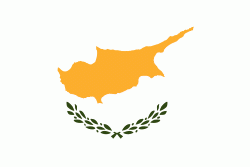Famagusta District (Famagusta District)
Famagusta District (Mağusa kazası) is one of the six districts of Cyprus. Its main town is the island's most important port, Famagusta.
Most of the district has been under Turkish control since the 1974 invasion. Since 1998, the northeastern section, including the Karpaz Peninsula, has been administered separately as the İskele District, a division not recognized by the Republic of Cyprus and the UN.
A district administration in "exile" exists on the Republic of Cyprus-controlled part of the island. This part of the district has a population of 46,900 inhabitants (2015).
Cape Greco (Capo Greco; Κάβο Γκρέκο; "Greek cape"), is a headland in the southeastern part of the district. It is at the southern end of Famagusta Bay. It is visited by tourists for its natural environment, and is a protected coastal nature park. From the high points on the cliff that rests at the cape one can view out to sea. According to local legend, it is also the home of the Ayia Napa sea monster.
The area includes the fertile area known as the 'red villages' (Kokkinochoria, Κοκκινοχώρια), named after the distinct red color of the soil.
Most of the district has been under Turkish control since the 1974 invasion. Since 1998, the northeastern section, including the Karpaz Peninsula, has been administered separately as the İskele District, a division not recognized by the Republic of Cyprus and the UN.
A district administration in "exile" exists on the Republic of Cyprus-controlled part of the island. This part of the district has a population of 46,900 inhabitants (2015).
Cape Greco (Capo Greco; Κάβο Γκρέκο; "Greek cape"), is a headland in the southeastern part of the district. It is at the southern end of Famagusta Bay. It is visited by tourists for its natural environment, and is a protected coastal nature park. From the high points on the cliff that rests at the cape one can view out to sea. According to local legend, it is also the home of the Ayia Napa sea monster.
The area includes the fertile area known as the 'red villages' (Kokkinochoria, Κοκκινοχώρια), named after the distinct red color of the soil.
Map - Famagusta District (Famagusta District)
Map
Country - Cyprus
 |
 |
| Flag of Cyprus | |
The earliest known human activity on the island dates to around the 10th millennium BC. Archaeological remains include the well-preserved ruins from the Hellenistic period such as Salamis and Kourion, and Cyprus is home to some of the oldest water wells in the world. Cyprus was settled by Mycenaean Greeks in two waves in the 2nd millennium BC. As a strategic location in the Eastern Mediterranean, it was subsequently occupied by several major powers, including the empires of the Assyrians, Egyptians and Persians, from whom the island was seized in 333 BC by Alexander the Great. Subsequent rule by Ptolemaic Egypt, the Classical and Eastern Roman Empire, Arab caliphates for a short period, the French Lusignan dynasty and the Venetians was followed by over three centuries of Ottoman rule between 1571 and 1878 (de jure until 1914).
Currency / Language
| ISO | Currency | Symbol | Significant figures |
|---|---|---|---|
| EUR | Euro | € | 2 |
| ISO | Language |
|---|---|
| EN | English language |
| EL | Greek language |
| TR | Turkish language |















